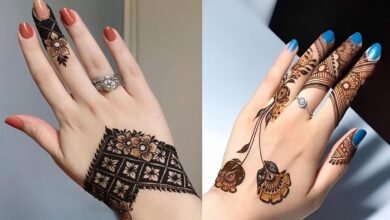Mobile App Picture: A Guide to Visual Content for Apps

In today’s digital world, visual elements like images and graphics have become an essential part of mobile applications. The mobile app picture serves not only as a design tool but also plays a pivotal role in enhancing user experience and engagement. With millions of apps available for download, having the right images can help an app stand out in a crowded market. Whether you are designing a new mobile app or looking to improve an existing one, understanding the importance of mobile app pictures can help you make decisions that will boost both the aesthetic appeal and functionality of your app.
In this guide, we will dive into how to effectively use mobile app pictures, what types of images are important for your app, and how they influence the user experience. We’ll also explore tools, best practices, and examples of effective mobile app pictures.
The Importance of a Mobile App Picture in Design
When creating a mobile app, one of the first things users will notice is the mobile app picture associated with it. Whether it’s an app icon, splash screen, or in-app graphics, these images are often the first touchpoint users have with the app. The mobile app picture is crucial because it represents the identity of the app. A high-quality, visually appealing image will grab attention and make users more likely to explore the app further.
For instance, the mobile app picture for a social media app might feature an image of happy people or vibrant colors to evoke positive emotions, while a fitness app might showcase athletes or healthy food to convey energy and wellness. The right image can help convey the purpose of the app in a way that words alone cannot. In short, mobile app pictures are an essential component of the app’s visual communication strategy.
Key Types of Mobile App Pictures
There are several types of images that can be included in a mobile app. Each plays a unique role in the user experience and overall design. Understanding how to use each type of mobile app picture will ensure that your app is visually appealing and effective.
1. App Icon
The app icon is the most prominent mobile app picture users see when they are browsing through app stores or on their device home screen. It’s the first impression of your app and can make or break the decision to download it. The icon must be simple, memorable, and representative of the app’s core function. A good icon is visually appealing and easily recognizable at different sizes, whether on a large tablet screen or a small smartphone icon grid.
2. Splash Screen
The splash screen is another important mobile app picture. This image appears briefly when the app is launched, typically before the user gets to the main interface. While it doesn’t require much interaction, it sets the tone for the app. The splash screen can contain a logo, a welcome message, or animations that enhance the user’s initial experience.
A well-designed splash screen helps to create a professional and polished look for the app, while also providing a smooth transition between the app launch and its main content. For many apps, this image serves as an opportunity to convey the brand’s personality and mission.
3. In-App Graphics
In-app graphics are the mobile app pictures you see within the app itself. These include buttons, icons, images for individual screens, and even backgrounds. The quality and relevance of these images can drastically impact the user experience. If your images are poorly designed or out of place, users may have difficulty navigating your app or may even abandon it entirely.
These images should match the overall aesthetic of the app and enhance its functionality. For example, if you are building an e-commerce app, high-quality product photos are essential to giving users a clear view of what they’re purchasing.
4. Feature Screenshots
When promoting an app in an app store or on a website, feature screenshots are some of the most important mobile app pictures you can use. These images showcase the app’s key features and functionality. Great feature screenshots should highlight the unique selling points of the app, demonstrating to potential users what they can expect once they download and use it.
Feature screenshots should be clean, clear, and focused on the most important aspects of the app. Avoid clutter and make sure each image serves a purpose. The goal is to create a visual story that helps users quickly understand what the app offers and how it works.
5. Marketing and Promotional Images
Many apps also require marketing and promotional images, which can be used in ads, on social media, or in email campaigns. These mobile app pictures should reflect the app’s branding and convey a message that resonates with potential users. High-quality, engaging visuals can entice people to learn more about your app or download it right away.
Whether it’s a banner ad or a social media post, promotional images should be crafted with the audience in mind. Engaging visuals that are aligned with your brand can lead to higher download rates and more successful marketing campaigns.
Best Practices for Mobile App Pictures
Now that we’ve covered the different types of mobile app pictures, it’s time to focus on the best practices for creating and using these images. The right images can enhance the user experience, promote your brand, and increase your app’s download rate. Here are some important tips to keep in mind:
1. Ensure High Quality
The quality of your mobile app pictures is crucial. Low-resolution images can appear pixelated or blurry, which can leave a negative impression on users. Always use high-resolution images and ensure they are optimized for various screen sizes and resolutions. High-quality images create a professional look and show users that you care about the details.
2. Maintain Consistency with Branding
Consistency in your mobile app pictures is important for building a strong brand identity. Whether it’s the app icon, splash screen, or in-app graphics, all images should align with your brand’s color palette, font choices, and overall visual style. Consistency will help reinforce the brand’s identity and make the app feel cohesive.
3. Optimize for Different Screen Sizes
Mobile devices come in various screen sizes and aspect ratios. Make sure your mobile app pictures are adaptable to these different sizes. Whether the user is on an iPhone, Android device, or tablet, your images should look great on any screen. Consider designing images that can scale or adjusting the design based on screen size to ensure that everything appears crisp and well-proportioned.
4. Avoid Clutter and Complexity
In mobile app design, less is often more. Avoid overcrowding your mobile app pictures with too many elements. Simple, clean images are more effective than ones filled with unnecessary details. This is especially true for icons and feature screenshots. Keep the focus on what matters most to your users, and make sure the images serve a purpose.
5. Use Images That Improve Usability
Remember that mobile app pictures should not only be visually appealing but also improve the usability of your app. Icons, buttons, and in-app graphics should make it easy for users to navigate the app. For example, if you are designing an e-commerce app, product photos should be clear and easy to view, while buttons should be intuitive and easy to tap.
Tools for Creating the Best Mobile App Pictures
Creating the mobile app pictures that will make your app stand out doesn’t have to be difficult. With the right tools, you can create professional-quality images that elevate your app’s design. Here are some popular tools for creating mobile app pictures:
1. Adobe Photoshop
Adobe Photoshop is one of the most powerful tools for creating and editing images. With its extensive features and capabilities, Photoshop is an excellent choice for designing mobile app pictures like icons, splash screens, and in-app graphics. It offers flexibility and control, allowing you to create high-quality images for all app elements.
2. Sketch
Sketch is a vector-based design tool used by many app designers to create high-quality user interfaces. It is known for its ease of use and is particularly popular for designing mobile app pictures. Sketch allows you to create scalable vector images, making it ideal for designing icons and other visual elements for your app.
3. Canva
Canva is an accessible, user-friendly design tool perfect for creating promotional mobile app pictures like feature screenshots and social media images. While it may not have the same depth as Photoshop, Canva is a great option for beginners who want to create professional-looking visuals quickly and easily.
4. Figma
Figma is a collaborative design tool that allows teams to create and share design assets. It’s particularly useful for creating mobile app pictures that need to be shared across teams for feedback or iteration. Figma allows you to design UI elements like buttons, icons, and layouts while maintaining consistency in your app’s visuals.
Conclusion
The mobile app picture is an essential component of any successful app design. From the app icon to in-app graphics and promotional images, the pictures you use can significantly impact the user experience and overall success of your app. By focusing on high-quality, consistent, and functional imagery, you can create a visually appealing app that resonates with users and enhances their experience.
Remember, a mobile app picture is more than just a design element—it’s a powerful tool that communicates your brand’s identity, purpose, and value to users. Take the time to optimize your images and ensure they are aligned with your app’s goals. With the right images, your app will stand out and attract more users, ultimately leading to greater success.
FAQs
1. What is the role of a mobile app picture in user experience?
A mobile app picture serves as a visual representation of the app, influencing first impressions and user engagement. It helps to communicate the app’s purpose and improve navigation.
2. How can I optimize mobile app pictures for different devices?
To optimize your mobile app pictures for various devices, ensure that your images are high resolution and scalable. Use responsive design techniques to adjust image sizes and proportions based on the device screen.
3. What should I consider when designing a mobile app icon?
When designing an app icon, focus on simplicity, clarity, and relevance to your app’s core function. It should be visually appealing and recognizable at different sizes.
4. How do in-app images affect mobile app performance?
In-app images that are too large or poorly optimized can slow down app performance. It’s important to compress images without sacrificing quality to ensure smooth loading times and a better user experience.
5. Can I create mobile app pictures without design experience?
Yes, tools like Canva and Figma make it possible to create mobile app pictures without extensive design experience. These platforms offer templates and user-friendly features to help beginners create professional visuals.





